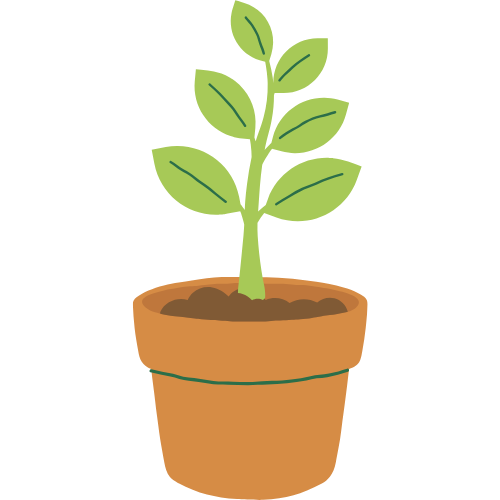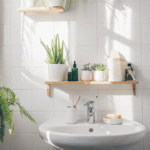It is a time of dormancy as the days shorten and temperatures cool down and our indoor plants go dormant. The nice warm and humid climate in the summer is done away with in order to face a problem such as no moisture on the interior air and chilly drafts and much less sunlight. As you need to make some alterations in your care routine when the winter comes in order to ensure that your green companions remain healthy and vibrant throughout the winter. This is a step by step survival guide to ensure that even your indoor plants survive and even thrive until the spring.
1. Modify The Times You Water
This is perhaps the most important change that you make. Overwatering is the worst thing you can do in the wintertime to your plants. There is decreased light and cooler temperatures which slow or even halt the growth of a plant and it only uses a fraction of the water needed.
- It is important to reduce the number of watering sessions, rather than the size. This means that instead of providing a small amount of water a couple of times a day, it would be better to water generously when and if you are indeed watering, but make it less frequently. Two inches of soil should dry out and then be watered once more is a good rule of thumb. In case of many plants, this can come down to watering at intervals of a few weeks rather than once per week.
- The Finger Test: To test the moisture level of the soil, you can use you finger. When it feels dry on the touch then one needs to water it. Should this be still wet, leave it a few days longer.
- Cold Tap Water is Hazardous: Tap water that is too cool may shock the roots of your plant. This water should then be left to settle a few hours to bring it to room temperature.
- Prevent Standing Water: Make sure that your pots have good drainage holes in them and that you empty the saucer after watering to avoid having the roots standing in water that will cause root rot.
2. Use Good Lighting
During winters, days are shorter and the intensity of the sun is also low. Your plants in general and those that are fond of the sun-blaze in particular will be inviting every sun-beam on which they can lay hold.
- Bring Plants Closer to Window: Transplant the plants to the brightest location at your house; usually it will be a south- or west-facing window. And take no trouble to burn their leaves, the sun of winter will never do so.
- Turn Your Plants: Your plant will need a deep level of light on every side and you need to turn it every week or two. This does not allow the plant to tilt very much towards a source of light.
- Add Grow Lights: As previously mentioned, some plants may need more light than others or you may have a dimly-lit home. In that case, a full-spectrum grow light may be a worthy investment. The LED grow lights consume less energy and can still give the needed light during the process of photosynthesis without overheating.
3. Control of Humidity and Temperature
Indoor heating systems that warm us up, dry us inside which bears little resemblance to the tropical life that lots of houseplants have been accustomed to.
- Increase Humidity: One of the easiest ways to provide your plants with a humid microclimate is to place them in the same area. Plants may also be put on a pebble tray: a shallow tray of water and decorative pebbles, which raises the humidity near the plants due to evaporation of the water. A humidifier is a good solution to use in the long run wherein the humidity level is stable.
- Stay away of Cold drafts and heat vents: Cold drafts will cause it to go into shock, and it will lose its leaves. Your plants should not be left near any kind of draft where there is cold wind passing by the window, the doors, and the air conditioners. On the same lines, the hot and dry air that blows on a plant through a radiator or heating vent would dry up the plant soon.
- Stable Temperatures: The majority of houseplants prefer temperatures of 65°F (18°C)-75°F (24°C). Do not have too big temperature variations, at least not at night.
4. Pause Fertilizing
The nutrient requirements of plants drop along with the water needs of the plants. Most houseplants go dormant during the winter and fertilizing the plants during this time may cause more damage than good.
- Stop Feeding: For the fall and all the winter, stop fertilizing. The salts that accumulate in the soil through fertilization of a dormant plant may burn the roots and cause the plant to be stressed.
- Resume in Spring: As spring brings that hint of new life, you can go back to fertilizing normally.
5. Wash Them Good
Leaves of the plant are covered with dust especially in the winter where interior air has a lot of dryness and lack of static. Light can be blocked and light from the sun is required for photosynthesis by the plant.
- Wipe the Leaves: Clean the leaves on your plants by giving them a wipe down using a soft, damp cloth regularly (every 3 to 4 weeks). This will make them absorb all the light as much as possible.
- Shower Cleaning: Smaller plants can be cleaned off lightly in the shower using room-temperature water, a pleasant side benefit of giving the plant some much-needed humidity as well.
6. Expect Not to be Frozen
It is not something to panic about, when your plants present a couple of indications of distress. It is something that is in their nature of winter dormancy.
- Leaf Drop: It is also normal that some plants shed off some lower leaves as a way of preserving their energy. This is not a sign that your plant is dying.
- Reduced Growth: Don not expect a lot, or rather any new growth. Beautiful plant is just resting and expecting a lot of new life when spring comes back.
This simple guide will help you make sure that your indoor plants will comfortably survive the cold winter and come out in the spring in a healthy condition and be ready to excel.



